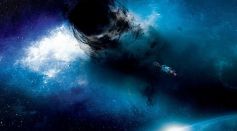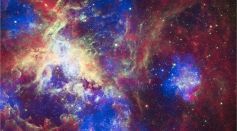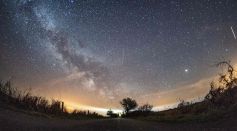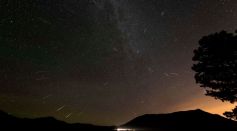Tags: Milky Way

Biggest Galaxy Ever That Is 100 Times Bigger Than Milky Way Discovered 3 Billion Light-years Away

Enormous Yet Peculiar Cosmic Filaments Found Outside the Milky Way Galaxy [Look]

New Interactive Map of the Universe Allows People To Scroll Through the Cosmos to the 'Edge of What Can Be Seen'

Over 10-Billion-Year-Old Remnants of a Destroyed Solar System is the Oldest Ever Found in the Milky Way Galaxy
Researchers Find Hot Gas Bubble Playing With Milky Way’s Black Hole

Discovery of the Nearest Black Hole to Earth Implies Existence of Many Others in the Galaxy

Hubble Space Telescope Captures Gas in Motion, Star Formation Towards a Nearby Galaxy

First Cry of a Star From the Small Magellanic Cloud Gives New Perspective on How They Are Born

Oddly-Shaped Dwarf Galaxy with No Dark Matter Baffles Scientists

Super-Fast Mapping Device Will Help Scientists Analyze the Origins of Milky Way Galaxy

'Black Hole Police' Finds First Ever Dormant Giant 160,000 Light Years Away From Milky Way

Fastest Star Completed Its Orbital Period Around Supermassive Black Hole Sagittarius A* at the Center of Milky Way Under 4 Years

Scientists Find Isoprophyl Alcohol in Milky Way; Can You Guess Which Part It Hides?

Major Astronomy Events in July 2022: Summertime Comet, Meteor Showers to Join Milky Way in Night Sky This Month

ESA Releases New Map From Gaia Mission Revealing Additional Secrets About Milky Way, Stars, Asteroids and More

Hubble Space Telescope Finds Stunning Globular Cluster With Sparkling Stars Near Milky Way Galaxy [LOOK]

Tarantula Nebula Images Reveal Catastrophic Explosion Induced by Massive Stars at Its Center During Early Age of Universe

Remnants of Catastrophic Collision That Gave Birth to Andromeda Compiled to Discover the Origin of the Galaxy
ESA's Gaia Can Detect Starquakes, One of the Most Shocking Discoveries Revealed in Newly Released Spectroscopy Data

LOOK: Largest Near-Infrared Image Taken by Hubble Space Telescope Released Today
Most Popular

How AI Is Used in Weather Prediction: Smarter Forecasting Through Machine Learning

De-Extinction vs. Conservation Science: Which Approach Protects Biodiversity Most Effectively?

The Future of Clean Tech: Exploring the Next Generation of Renewable Energy Breakthroughs

Geoengineering and Climate Intervention Science: Can We Really Engineer a Cooler Planet?





